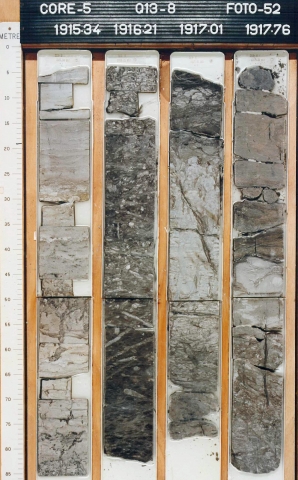Typically dark to light grey, red and variegated clay- and siltstones, fine to medium grained sandstones with bed thicknesses up to a few metres, and massive, thick-bedded, coarse grained sandstones. Coal and lignite beds are associated with the grey claystones. Dispersed lignitic matter, siderite spherulites and concretions are common. Cored sections show extensive mottling of the variegated claystones. Sands occur as sheets, isolated or stacked channels.
Fluvial-plain deposits, with sand concentrated in mostly channels and crevasse-splays. On the floodplains outside the channels, development of swamps and soils took place. The main sediment transport direction has been reconstructed as southeast-northwest.
The base is formed by the unconformable contact with the Altena Group.
Normally overlain by the massive sandstone of the coastal-plain Delft Sandstone Member, or the shallow-marine Vlieland Sandstone Formation. Locally the Delft Sandstone Member is not developed, and the Alblasserdam Member is overlain by the Rodenrijs Claystone Member. In areas of Subhercynian/ Laramide inversion the Alblasserdam Member is overlain by the Chalk Group, Lower North Sea Group or Middle North Sea Group.
